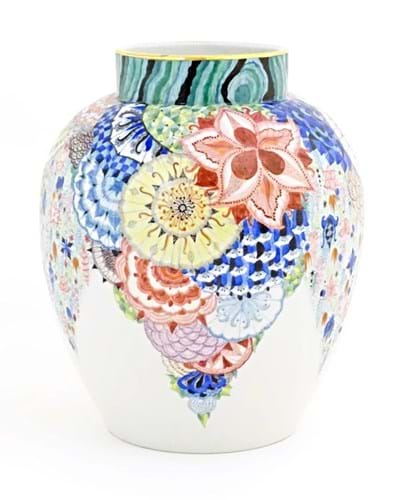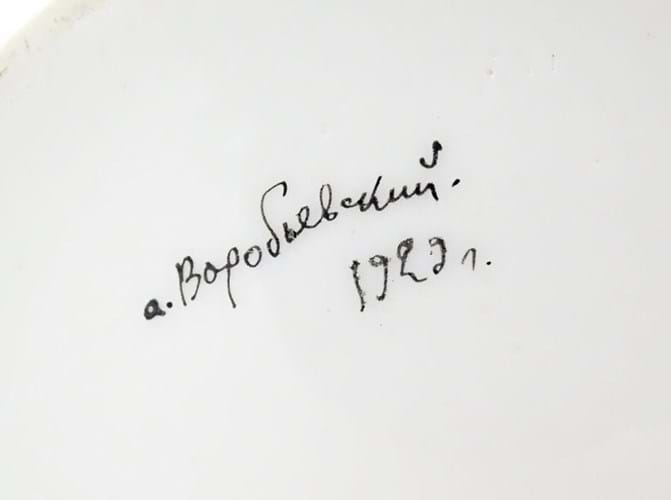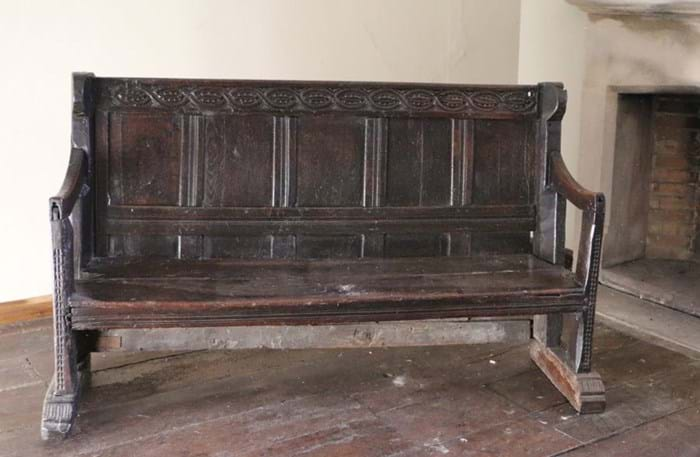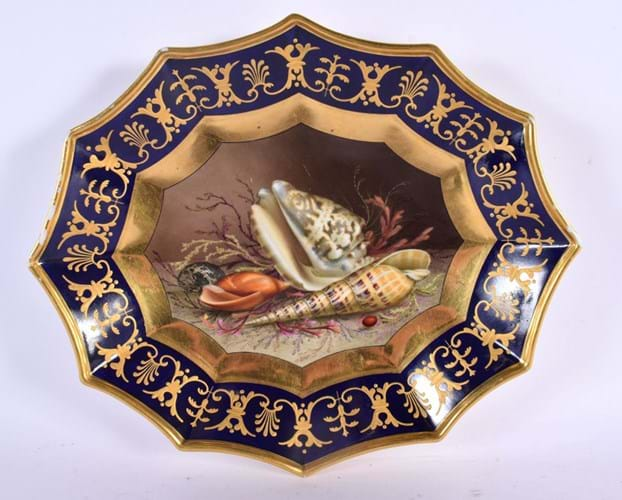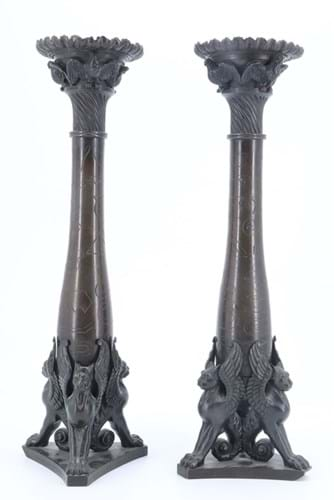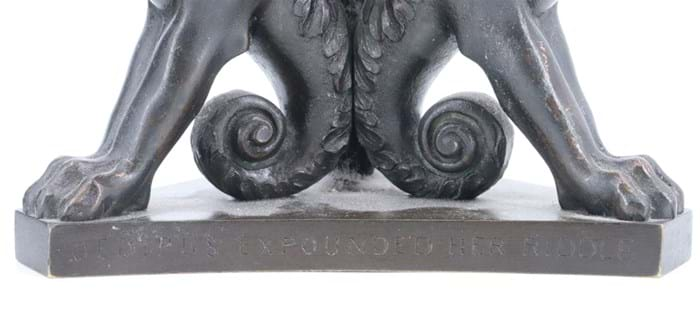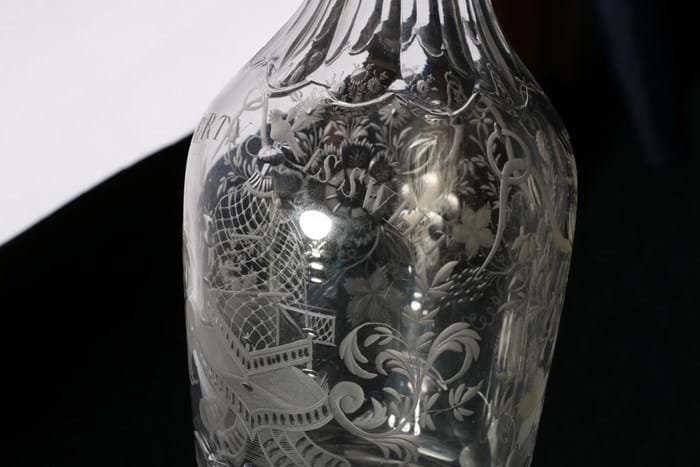1. Soviet-era vase – £15,000
This 9in (22cm) vase by the Lomonosov Porcelain Factory is signed and dated 1929 for Aleksey Vorobyevsky (1906-92). Estimated at £200-400, it sold for £15,000 at Claydon Auctioneers in Middle Claydon, Buckinghamshire on February 26.
Vorobyevsky, whose father was a lowly railway worker in Tankhoy on the banks of Lake Baikal, became one of the key artists associated with the former Imperial Porcelain Factory in the Soviet era.
Although celebrated both at home and abroad later in his lifetime (in 1969 he was elected People’s Artist of the RSFSR and the following year received the Ilya Repin State Prize), he had begun working as a porcelain decorator after graduating from the Pavlovsk art school in 1926. Accordingly, this vase, decorated with vibrantly-coloured floral blooms in the Art Deco taste, is one of Vorobyovsky's earliest works.
At the start of the Russian Revolution in 1917, the Bolsheviks nationalised and rebranded the Imperial Porcelain Factory as the State Porcelain Factory. Upon the 200th anniversary of the Russian Academy of Science in 1925, the company was again renamed as the Lomonosov Porcelain Factory in honour of the academy’s founder, Mikhail Lomonosov.
Vorobyevsky painted one of the most expensive pieces of Soviet porcelain ever sold at auction: a propaganda charger made in 1927 to mark the 10-year anniversary of the USSR sold by Sotheby’s for a 10-times-estimate £320,000 in June 2021.
2. Tudor oak settle – £13,500
Most joined oak settles that appear on the market date from the 17th and the 18th centuries. However, this example offered as part of the Oak Interior sale at Bishop & Miller in Stowmarket, Suffolk on February 23 was perhaps as early as c.1540-80. Robustly-made with a 10-panel back, its decoration includes an elliptical leaf-carved top rail and chip-carved and chamfered front uprights.
As a piece of secular domestic furniture, it is much rarer than church pews of the Tudor period that still survive in situ in substantial numbers. According to the auction house this survivor had been acquired in the 1980s from Forde Abbey in Dorset.
Pieces of this kind appeal to a serious collecting audience at prices way above the levels established for more ‘decorative’ oak and vernacular furnishings.
Estimated at £3000-5000, it took £13,500.
3. Regency porcelain dish – £6000
An exceptional piece of Regency porcelain emerged for sale at Hannams in Selbourne, Hampshire. This was a 10in (24cm) oval scalloped edged dish by the Flight, Barr & Barr factory, painted with a still life of shells within a rich gold and cobalt blue border of anthemion.
It was probably the work of the great Worcester-born. London-based decorator Thomas Baxter (1782-1821). Guided at just £150-200 at the sale on February 21-24, it took £6000.
It shared many similarities with a larger 13in (33cm) centrepiece by Baxter dated c.1814-16 sold for £30,000 as part of Richard Baron Cohen’s Twinight Collection of British Porcelain sold by Bonhams in September 2021.
In particular, it had the same so-called ‘Baxter border’ that is found on many of the finest Flight, Barr & Barr plates. It is thought that, as Baxter was trained as an all-round decorator, he may have gilded the plates himself.
Bonhams cataloguer pointed out that, although Baxter’s name became synonymous with shell painting on Regency Worcester porcelain (mostly through misattributions by early collectors) autograph works are relatively rare. He painted his shells with remarkable realism from nature using the stipple technique for delicate shading.
4. Egyptian revival candlesticks – £1800
This pair of English Regency bronze candlesticks in Egyptian revival taste sold for £1800 (estimate £100-150) at Paul Laidlaw in Carlisle on February 24.
Standing 13in (33cm) high, the design of three sphinx to the base and three owls to the capitals includes engraved pseudo hieroglyphs and an inscription to three sides reading Oedipus Expounded Her Riddle, She then Destroyd Herself (sic) and Oedipus Expounded Her Riddle.
These are very much in the manner of William Bullock (1773-1849) the older brother of the Regency furniture designer George Bullock. Although better known as a collector, naturalist and antiquarian (he founded a Museum of Natural Curiosities at 24 Lord Street, Liverpool in 1795 that later moved to the Egyptian Hall, Piccadilly), he was a designer of some merit and a talented jeweller and goldsmith.
The Museum of Fine Art in Boston has a similar pair of candlesticks that sit atop large seated models of the sphinx and marble bases.
5. 'Liberty is Sweet’ decanter – £2800
The idea of ‘liberty’ as a cause and a concept was not confined to the coffee shops of Boston and Philadelphia. By the 1760s and the 1770s, liberty had been embraced by all political factions interested in the values of free trade, property rights and Protestantism.
The motto ‘Liberty is Sweet’ engraved to this shouldered decanter alongside the image of a bird cage with its door swung open could perhaps be a reference to unrest in the American colonies. However, dating from c.1760, it more likely offers support for other ‘liberal’ causes such as John Wilkes’ fight of the freedom of the press or the support for the Hanoverian succession against French ‘despotism’ and Jacobitism.
Save the ‘spire’ stopper, the decanter, with an unmarked white metal mount, was in good condition. An attractive proposition at the £50-100 estimate it received at Thomson Roddick in Edinburgh on February 16, it raced away to bring £2800.


